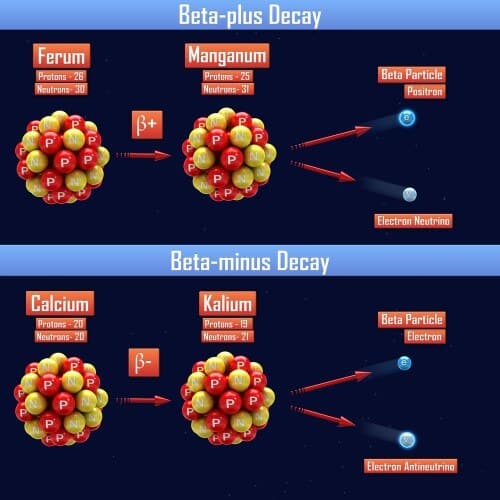Scientists race to solve an age-old particle mystery

The word "rare" too generously describes the phenomenon called "neutrinoless double beta decay": a burst of radioactive emission in which two neutrino particles ionize each other and disappear. To observe this phenomenon in a single atom, you would have to wait perhaps trillions of trillions of years - much longer than the age of the universe.
And maybe neutrinoless double beta decay doesn't happen at all. No one has ever seen her. And yet, physicists are eager to notice a phenomenon that may imply that these fascinating particles, called neutrinos, encode many more new secrets.
Most particle hunting expeditions in physics try to locate certain particles using detectors. But the goal of the search for neutrinoless double beta decay is the absence of particles. This decay is a version of another nuclear process, more understandable, called "double beta decay", in which radioactive atoms of a certain element become atoms of another element (for example xenon and barium), while releasing a pair of electrons and a pair of neutrino particles. But if neutrinos are their own antimatter particles, as some physicists suspect, the two particles can ionize each other and disappear. The experiments will therefore pick up all the features of normal double beta decay, only without neutrinos.
If neutrino disappearance does occur in nature, its discovery will open up several new areas of research. "Neutrinoless double beta decay would be clear evidence of new physics," says Carter Hall, a physicist at the University of Maryland. And perhaps most intriguing of all is the claim that if neutrinos and antineutrinos are indeed identical particles, then it follows that these particles do not derive their mass from the Higgs boson, as all other elementary particles do, but through another, unknown mechanism. Such a doubling of neutrino particles may also explain why antimatter is so rare in the universe.
A spark of hope was sparked in 2001 when a team of physicists working in the "Heidelberg-Moscow Double Beta Decay Experiment" noticed what he claimed was the rare decay. But new data eliminated the chance that this actually happened. An article published in the journal Physical Review Letters In September 2012 he reported that the "Germanium Detector Array" (GERDA) in Italy, which was supposed to confirm the claim of the Heidelberg-Moscow team, did not discover anything in an experiment to detect neutrino-less double beta decays in a heavy isotope of germanium. During 2014, GERDA is expected to undergo an upgrade that will increase its sensitivity to fields that will allow, according to many neutrino researchers, to discover the phenomenon.
Scientists are also looking at particles released in the decays of other radioactive atoms that, according to theory, should also include neutrino-less double beta decays. In 2012, researchers presented the first data from two new experiments, KamLAND-Zen in Japan and EXO-200 in New Mexico, which examine the decay of a certain isotope of xenon. So far no evidence of neutrino-less decays has been found in both experiments. And yet, during the long search for this elusive phenomenon, which has lasted for decades, this is the first time that physicists have experiments that may bring them to the goal.
______________________________________________________________________________________________________________________________________________________________________________________
for further reading: Ghost lighthouses of new physics, Martin Hirsch, Heinrich Fass Warner Forud, Scientific American Israel, August-September 2013.
The article was published with the permission of Scientific American Israel

4 תגובות
I think it is more likely that there is a problem with the detectors
I don't know how much it has to do with neutrinos, but I wanted to refer to the particles faster than the speed of light that were discovered in the experiment that was rejected, and to say that this could have happened from slightly different parallel worlds, for example, when the physicists got up in the morning for the experiment. And this is my reference. Sincerely
Scientifically interesting articles, and a few talkbacks. Asking all the traditional talkbackists of the scientist, leave a sign that you have visited the site. I have no doubt that critics, I always come back to read.
interesting.
But statistically it would be more likely to claim that the detector did not detect a particle as a result of a problem with the detector and not because the particle was not there. So how can such a claim be proven? In the same way, the same experiment can prove the reliability of the detection of the detectors.